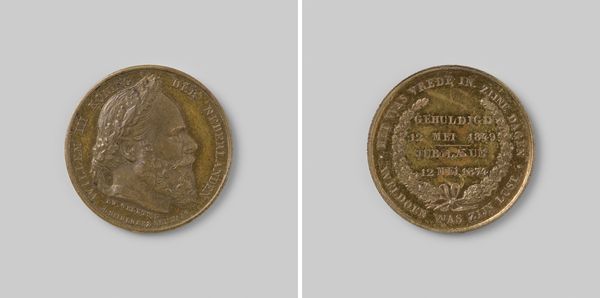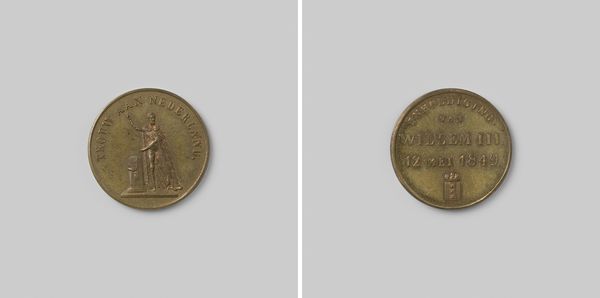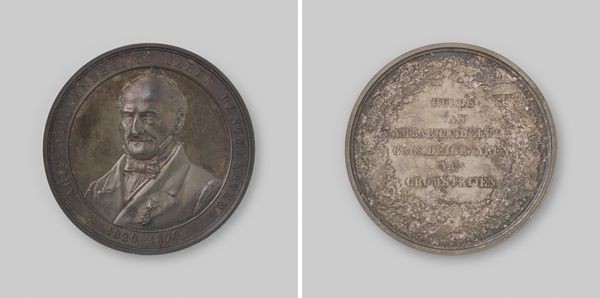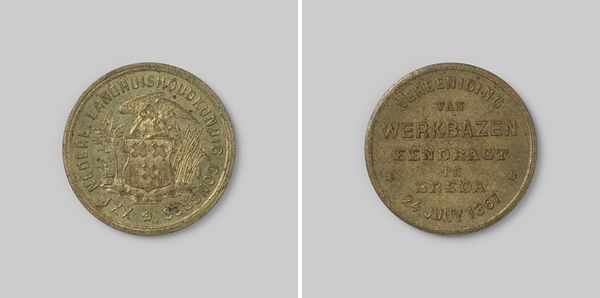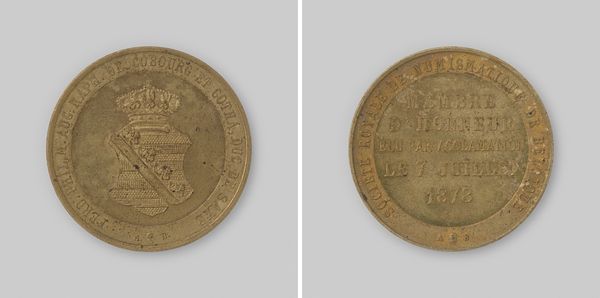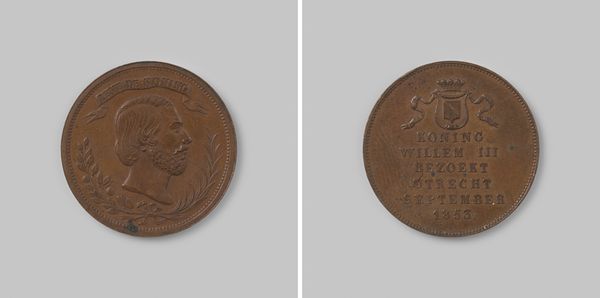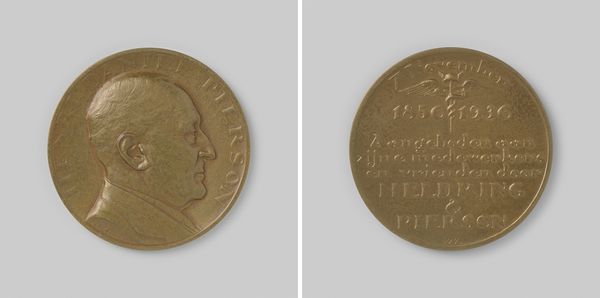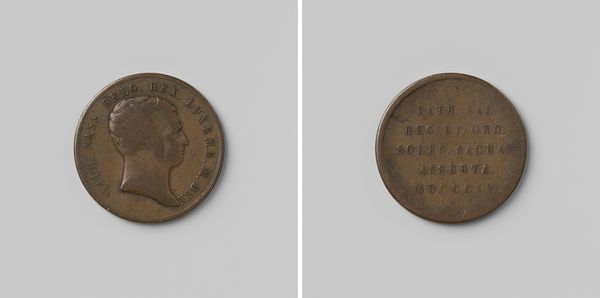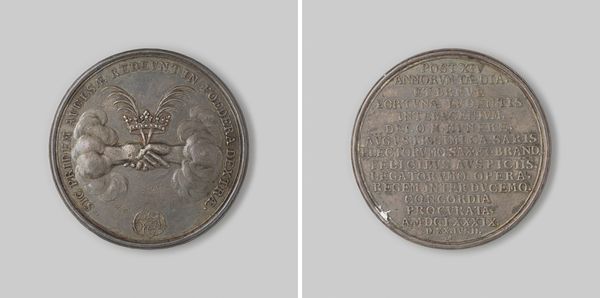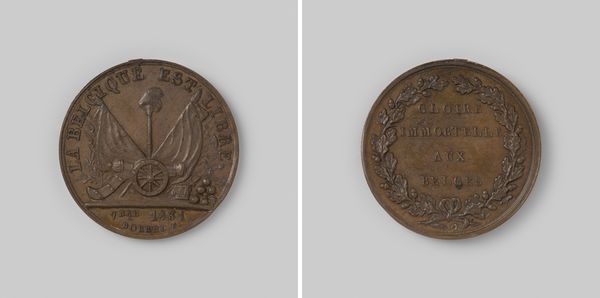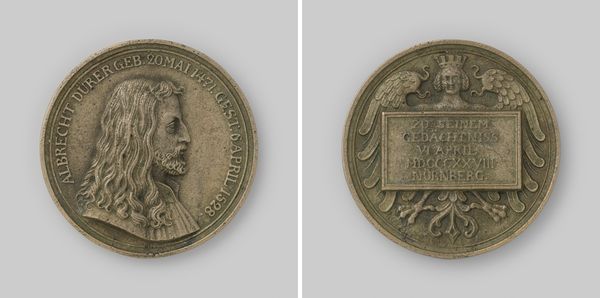
Opening van het Noordzeekanaal, ter ere van Willem III, koning der Nederlanden, penning geslagen op last van de Amsterdamsche Kanaal Maatschappij 1876
0:00
0:00
Dimensions: diameter 2.6 cm, weight 6.35 gr
Copyright: Rijks Museum: Open Domain
Editor: Here we have a bronze medal, made to celebrate the Opening of the North Sea Canal in 1876, honoring King Willem III. It’s interesting to consider the materiality of this object… what can you tell me about it? Curator: From a materialist perspective, consider the production. This isn’t just about Willem III. It is commissioned by the Amsterdam Canal Company, an enterprise. The choice of bronze itself speaks to a valuing of industrial production. Can you see the inscription mentioning the company around the edge of the coin? Editor: Yes, it’s pretty small but I see it. So, bronze was symbolic of industry at the time? Curator: Exactly. The canal itself represents infrastructure, commerce, control of nature – bronze visualizes progress, of transforming resources. Where was this bronze sourced? Who were the laborers involved in the mining, smelting, and minting of this object? How was this medal distributed, consumed, and valued by the public? Editor: I guess I hadn't considered all the hands involved! It brings new meaning to this "commemorative" object by understanding its origins and purpose in such a broad way. Curator: Precisely! What does it tell us that a company, rather than the government, produced and distributed this medal? It is worth investigating which foundries or companies profited most. By looking closely at production and circulation, we begin to grasp power relations. Editor: That makes me rethink the visual language, which seemed pretty standard for Neoclassical portraiture – it’s less about celebrating the king, more about solidifying the Amsterdam Canal Company! Curator: Indeed. We move beyond a singular reading toward recognizing diverse socioeconomic forces and materials intersecting at the time. Editor: Thanks! I learned that even the smallest object has a rich story embedded within its materiality and production. Curator: Indeed! Everything from labor practices to consumption patterns has shaped its meaning, revealing complex histories.
Comments
No comments
Be the first to comment and join the conversation on the ultimate creative platform.
